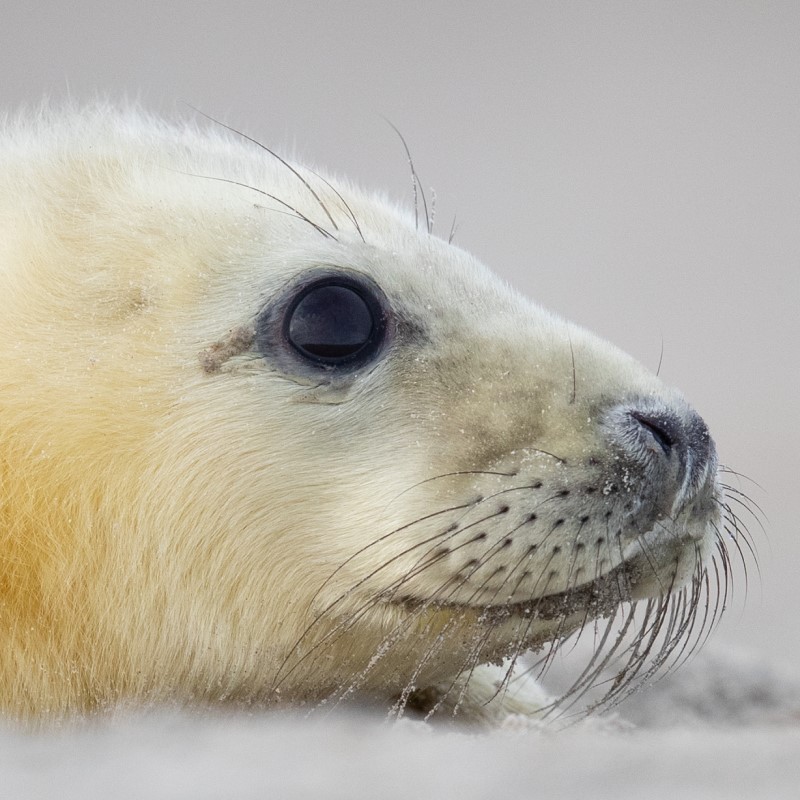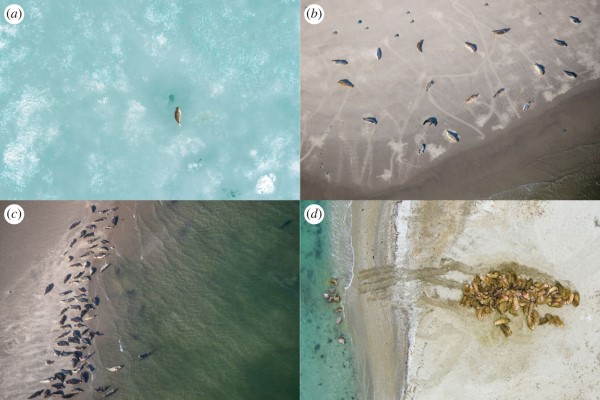New research published in Royal Society Open Science uses aerial image analysis to explore social distancing patterns in seal colonies.

New research published in Royal Society Open Science examines fine-scale spatial patterns in colonies on land of two seal species: the harbour and grey seal. Results show that the density of grey seals is twice as high as that of harbour seals and that harbour seals keep more distance from conspecifics than grey seals do. We spoke to two of the authors, ir. Anne Grundlehner and Jeroen Hoekendijk to learn more.
What inspired you to do this study?
Most pinnipeds (e.g. seals, sea lions, walruses) are known to cluster together when they haul out on land or ice, where they come together to rest, pup or moult. Some species tend to stay close to or overlap each other, whereas other species are known to haul out solitarily. These are extreme examples that are known to be species-specific and relatively consistent. We were interested to investigate whether two species that co-occur in the Dutch North and Wadden sea and hence live in similar environmental conditions, display similar haul out behaviour—or haul out "patterns"—or not.
What was the most interesting finding?
The most interesting finding of our study was the clear difference between the two species. Our results showed that these two species, that live in similar environmental conditions, display different haul out patterns. In addition to that, it was interesting to find out that even though—compared to the extreme examples above—the patterns are relatively similar, the small-scale differences were very consistent. In other words: the distance individuals choose to keep from their neighbours while hauling out on land is very consistent.
What do these results suggest? Are there any interesting applications?
The results are interesting in the light of a fundamental question in ecology: why do species group together? Herding is commonly seen not only in pinnipeds, but also in other mammal species in both marine and terrestrial environments (dolphins, ungulates; deer, bison, zebras, elephants, etc). The small-scale differences between two relatively similar species, can result in new hypotheses, theories, and questions about what factors play a role in herd/group formation.
In addition, the observed spatial patterns are species-specific and can therefore serve as a tool for species identification. This is particularly handy for applications where the imagery is of too low resolution to use morphological characteristics to differentiate between seal species. Seals can be seen from space in satellite images, wherein a single seal is just a few pixels large: generally, not nearly enough to get the species right. By using these spatial haul-out patterns, we now have a new tool to help with species identification in satellite imagery.

Fine-scale haul-out patterns of pinnipeds. Figure 1 from Hoekendijk et al. 2023.
What was your experience like publishing with the Royal Society Open Science?
We had a pleasant experience publishing in Royal Society Open Science. We appreciate the smooth publishing process and clear communication with the editors.
What is next for your research? Where would you like to see this field in the future?
The application of digital aerial imagery in ecological research has been growing, but there remains a lot to be explored and tested. We hope that our findings provide opportunities to gather more information about pinnipeds (or even other mammal species) using satellite imagery, in remote and inaccessible regions, such as the Arctic. In addition, we hope to inspire other researchers to test their creative ideas and explore the further application of satellite, airplane, and drone images: which we hope will result in new information about various animal species' ecology and behaviour and provide us with information that is fundamental for conserving species and ecosystems, globally.
Royal Society Open Science is an open journal that welcomes the submission of all high-quality science. More information about the journal and the submission process can be found on our webpage.
Image credits: All photos provided by the authors. Photos (a) and (d) from Figure 1 are by Eelke Folmer (Aeria).
